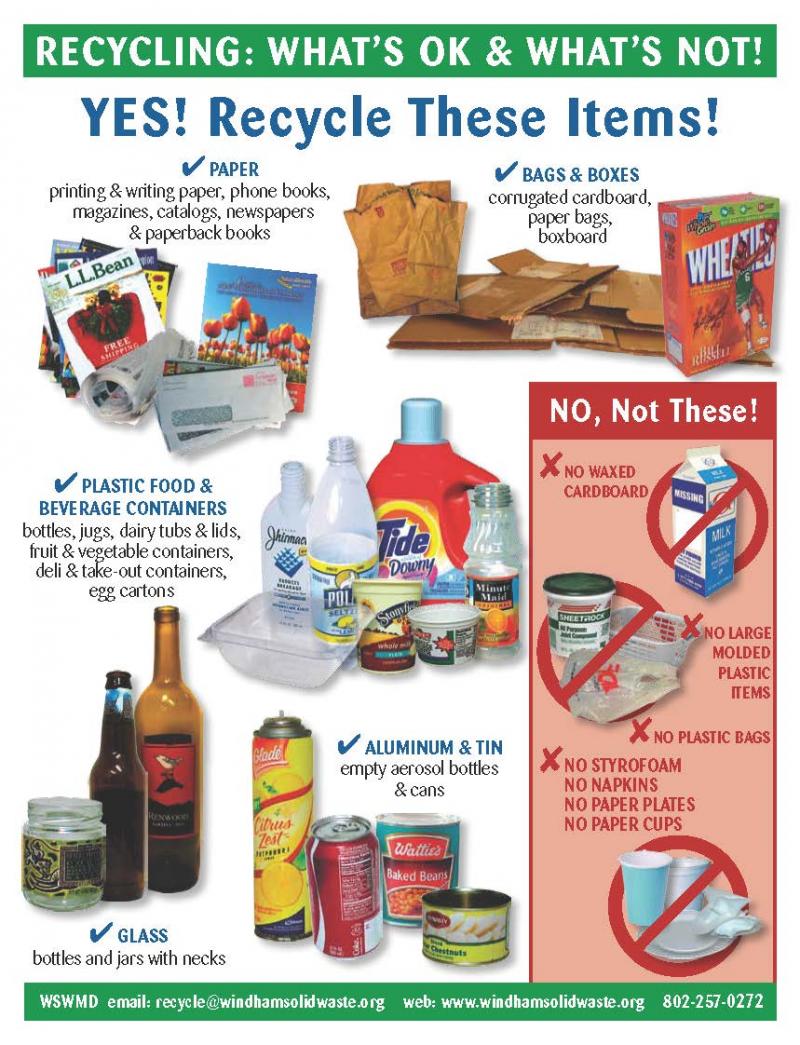Recycling Information
Why Recycle?
The definition of recycling is to remove materials from the waste stream and put them to new uses. By adopting recycling programs, we not only remove materials from the waste stream but they also: Reduce disposal costs; save valuable landfill space; conserve natural resources; provide educational opportunities; and empower people.
Why Recycle Paper?
The recycling of one ton of paper is the equivalent of conserving 17 trees and 8 cubic feet of landfill space. Producing “new” paper products from recovered paper rather than trees, not only saves money, but it also produces 25% less air pollution; produces 65% less water pollution; uses 40% less water; and uses 50% less energy.
Why Recycle Aluminum?
The mining of bauxite ore, the mineral from which virgin aluminum is produced, is both environmentally and economically costly. Producing “new” aluminum products from recycled aluminum rather than bauxite ore not only saves money, but it also produces 95% less air pollution; produces 95% less water pollution; uses 95% less energy. These savings allow manufacturers to pay top dollar for recycled aluminum and process it into many different items, including new aluminum cans, siding, and construction materials (i.e., beams and pipes).
Why Recycle “PET” Plastic?
Plastic is produced from a valuable, nonrenewable resource — oil; it can be an efficient product, which often conserves other resources when produced. For example, plastic’s unique characteristics — light weight and durable – enable producers to minimize the amount of material used, energy consumed, and waste generated in making products ranging form plastic cups to automobiles. It is for these reasons that there has been a substantial increase of plastic products over the last few years, and in particular, beverage bottles. Below are a few of the reasons you should consider plastic bottle recycling. Recycling one ton of “PET” plastic containers (29,970, twenty ounce bottles) conserves 7.4 cubic yards of landfill space. After netting out energy consumption for collection, processing, land-filling of residue and transportation to market, recycling a pound of PET saves approximately 37,890 BTU’s! Half of all polyester carpet manufactured in the United States is made from recycled plastic bottles.
What Happens to Recycled “PET” Plastic?
PET plastic can be recycled into many items. Your recycled bottles could end up where you least expect them, such as: – New plastic beverage containers, Egg cartons, Sweaters, Luggage, Long underwear, Car bumpers, Carpets, and Luggage racks — just to name a few.
Facts About Recycled Pet, “Plastic”:
It takes fourteen, 20 ounce PET bottles to make one extra large T-shirt or one square foot of carpet or enough fiber fill for a ski jacket. It takes sixty-three, 20 ounce PET bottles make a sweater. It takes eighty-five, 20 ounce PET bottles to make enough fiberfill for a sleeping bag. The PET bottle was patented in 1973 by chemist Nathaniel Wyeth (brother of distinguished American painter Andrew Wyeth). “PET” is, Polyethylene Terephthalate: Is tough and shatterproof, used in soft drink bottles.

